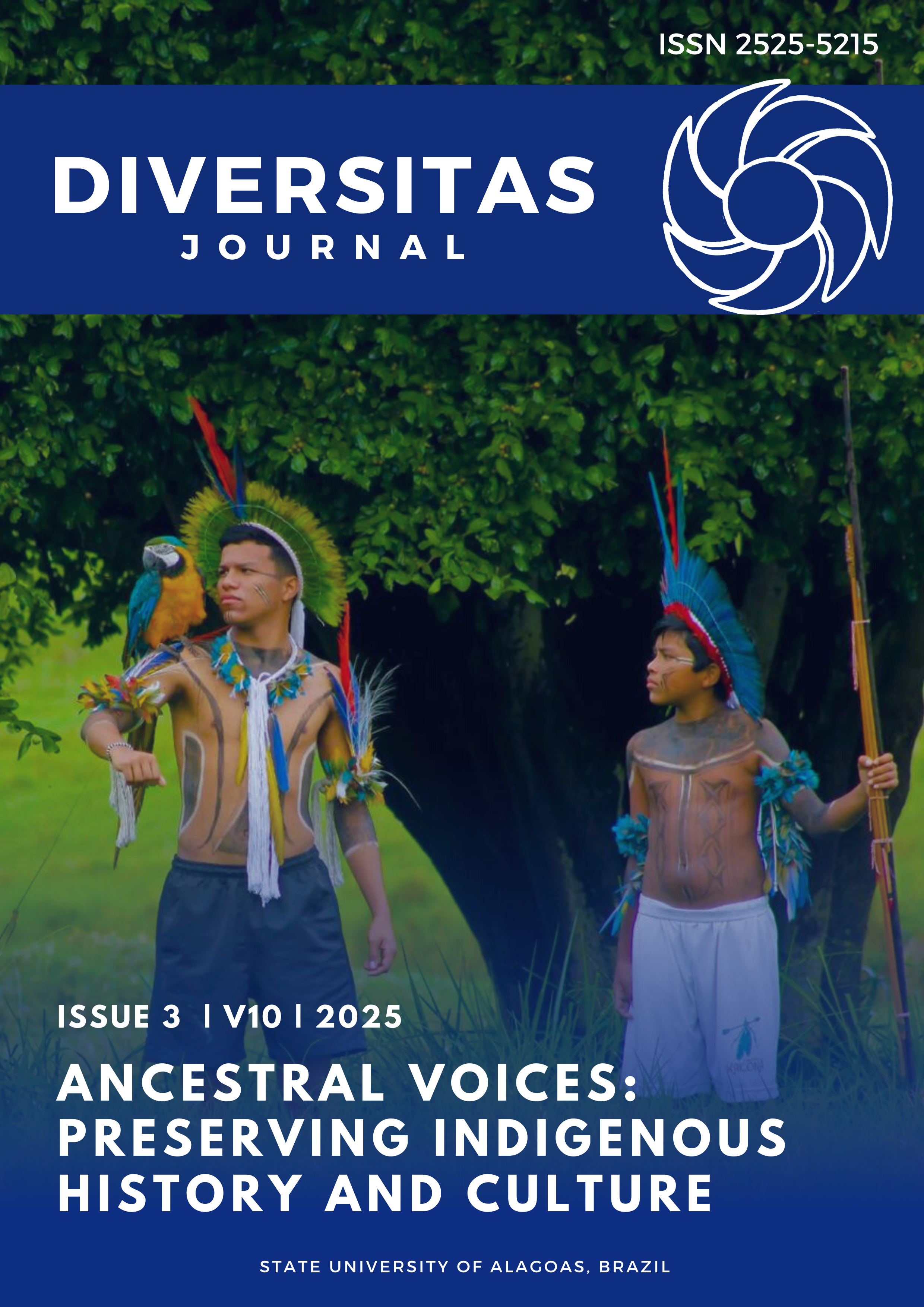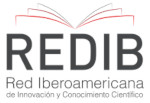The Post-Pandemic Era in Education: Adaptation and Continuity of Distance Learning in Mathematics Teaching in the Division of Antipolo City, Philippines
DOI:
https://doi.org/10.48017/dj.v10i3.3437Keywords:
Flexible Learning, Mathematics Teaching, distance educationAbstract
Even though the pandemic has ended and face-to-face classes have resumed as the primary mode of instruction across the country, distance learning remains prevalent. Many schools and students continue to rely on distance learning for various reasons, such as the need for flexibility, lingering public health concerns, natural calamities, and other factors. This indicates the importance of continuously assessing the implementation of distance learning modalities in schools, even after the pandemic. This ensures that mathematics teachers' practices are adapted to the current context, learners remain engaged despite the distance, and assessments are conducted validly and reliably. This qualitative study aimed to explore and analyze the experiences, challenges, and coping strategies of eight selected mathematics teachers from two public schools, one school per district, in the Division of Antipolo City, Philippines. The focus was on their ongoing adaptation to alternative learning delivery modalities (ALDM) in teaching mathematics at the secondary level. The study conducted an in-depth analysis of these experiences, challenges, and strategies. Findings suggest that implementing ALDM in mathematics teaching is still a viable tool to ensure the continuity of learning despite any disruptions, although its success depends on the type of learner. The study highlighted the importance of preparation, indicating that both teachers and learners need to be adequately prepared for the transition to distance learning. These results served as a basis for proposing a plan to support not only the teachers but also the students and their respective schools in effectively teaching mathematics during the implementation of ALDM.
Metrics
References
Abuhammad, S. (2020). Barriers to distance learning during the COVID-19 Outbreak: A Qualitative review from Parents’ perspective. Heliyon, 6(11). https://www.cell.com/heliyon/fulltext/S2405-8440(20)32325-2
Al-Arimi, A. (2002). Distance learning. Procedia - Social and Behavioral Sciences, 82-88. https://doi.org/10.1016/j.sbspro.2014.09.159
Alarcon, J., Sacopayo, S., Omela, A., Lictawa, M., & Pantiligan, J. (2021). Assessing learning modalities and their impact on student experiences: A study of Senior High School students at PSALMS, Inc. International Journal of Academic and Practical Research, 2(1). https://doi.org/10.5281/zenodo.8031171
Alhojailan, M. I. (2012). Thematic Analysis: A Critical Review of its Process and Evaluation. WEI International European Academic Conference Proceedings, 8–21. https://citeseerx.ist.psu.edu/document?repid=rep1&type=pdf&doi=0c66700a0f4b4a0626f87a3692d4f34e599c4d0e
Amer, A., Sidhu, G., Bo, Z., & Srinivasan, S. (2022). A short review of online learning assessment strategies. International Journal of Pedagogy and Teacher Education, 6(2), 89–103. https://jurnal.uns.ac.id/ijpte/article/view/66579
Apriyanti, C. (2020). The parents role in guiding distance learning and the obstacle during covid-19 outbreak. Jurnal Ilmiah Pendidikan Dasar, 7(2). https://repository.stkippacitan.ac.id/id/eprint/805/2/The%20Parents%20Role%20in%20Guiding%20Distance%20Learning.pdf
Assey, E. S. & Babyegeya, E. (2022). The challenges facing Effective teaching, learning and assessment in Community-Based Secondary Schools in Tabora Region. American Journal of Education and Practice, 6(2), 1–17. https://doi.org/10.47672/ajep.1084
Bahinting, M. a. P., Ardiente, M. P., Endona, J. E., Herapat, M. a. A., Lambo, D. C., Librea, H. J. A., Librando, M. C. Y., Libron, J. B. B., Petaluna, M. J., Ygot, G. C., Taneo, J. D., Cabello, C. A., & Minyamin, A. V. (2022). Stronger than the Internet Connectivity: A Phenomenology. Zenodo (CERN European Organization for Nuclear Research). https://doi.org/10.5281/zenodo.6791820
Balasabas, J. (2024). Understanding the Effects of Modular Distance Learning on Junior High School Students’ Mathematics Academic Performance in Post pandemic: A Teacher's Perspective. International Journal of Multidisciplinary Educational Research and Innovation. 2(4), 241-251.
Biggs, J. (1996). Enhancing teaching through constructive alignment. Higher Education, 32(3), 347–364. https://doi.org/10.1007/bf00138871
Camacho-Zuñiga, C., Peña-Becerril, M., De La O Cuevas-Cancino, M., & Avilés-Rabanales, E. G. (2023). Gains from the transition from face-to-face to digital/online modality to improve education in emergency. Frontiers in Education, 8. https://doi.org/10.3389/feduc.2023.1197396
Capendit, J. (2025). Evaluation of 5e modelled inquiry-based electronic strategic intervention materials (esims) in mathematics 8. Psychology and Education: A Multidisciplinary Journal, 35(3), 309–321. https://doi.org/10.70838/pemj.350308
Castroverde, F., & Acala, M. (2021). Modular distance learning modality: Challenges of teachers in teaching amid the Covid-19 pandemic. International Journal of Research Studies in Education, 10(8). https://doi.org/10.5861/ijrse.2021.602
Classroom Assessment Guidelines | Department of Education. (2015, May 26). https://www.deped.gov.ph/2015/05/26/classroom-assessment-guidelines/
Combo, J., Esguerra, M., & Reyes, Z. (2022). Teachers’ responsiveness to students’ needs in solving mathematical problems under modular distance modality. European Online Journal of Natural and Social Sciences 2022, 11(4), 155–171. https://european-science.com/eojnss_proc/article/view/6707
Corpuz, P. C. (2023). Integrating 7E Instructional Learning Cycle in developing instructional material using Google Site in General Mathematics. Zenodo (CERN European Organization for Nuclear Research). https://doi.org/10.5281/zenodo.8196153
Creswell, J. W. (2014). Research Design: Qualitative, Quantitative, and Mixed Methods Approaches. SAGE Publications.
Cueto, L. J., & Agaton, C. B. (2021). Pandemic and Typhoon: Positive impacts of a double disaster on mental health of female students in the Philippines. Behavioral Sciences, 11(5), 64. https://doi.org/10.3390/bs11050064
Dikli, S. (2003). Assessment at a Distance: Traditional vs. Alternative Assessments. The Turkish Online Journal of Educational Technology, 2(3), 13–19. http://files.eric.ed.gov/fulltext/EJ1101956.pdf
Duero, M. (2020, July 25). July 21, 2020 DM-CI-2020-00162 – Suggested Strategies in Implementing Distance Learning Delivery Modalities (DLDM) for School Year 2020– 2021 DepEd Region VIII. Department of Education Region VIII - Eastern Visayas. https://region8.deped.gov.ph/2020/07/25/july-21-2020-dm-ci-2020-00162-suggestedstrategies-in-implementing-distance-learning-delivery-modalities-dldm-for-school-year2020-2021/
Duta, N., Panisoara, G., & Panisoara, I. (2015). The Effective Communication in Teaching. Diagnostic Study regarding the academic Learning Motivation to students. Procedia - Social and Behavioral Sciences, 186, 1007–1012. https://doi.org/10.1016/j.sbspro.2015.04.064
Engelbrecht, J., Borba, M. C., & Kaiser, G. (2023). Will we ever teach mathematics again in the way we used to before the pandemic? ZDM, 55(1), 1–16. https://doi.org/10.1007/s11858-022-01460-5
Esguerra, M. A. & Combo, J. A. (2021, November 23 – 25). Learning mathematics from a distance: A basis for continuous improvement on printed modular distance learning (PMDL) modality [Paper presentation]. 2021 Virtual Conference of Basic Education Researchers, Cainta, Rizal
Francom, G. M., Lee, S. J., & Pinkney, H. (2021). Technologies, Challenges and Needs of K-12 Teachers in the Transition to Distance Learning during the COVID-19 Pandemic. TechTrends, 65(4), 589–601. https://doi.org/10.1007/s11528-021-00625-5
Hornby, G., & Lafaele, R. (2011). Barriers to parental involvement in education: An explanatory model. Educational Review, 63(1), 37–52. https://doi.org/10.1080/00131911.2010.488049
Insorio, A. O., & Macandog, D. M. (2022). Video lessons via YouTube channel as mathematics Interventions in modular distance learning. Contemporary Mathematics and Science Education, 3(1), ep22001. https://doi.org/10.30935/conmaths/11468
King, F. B., Young, M. F., Drivere-Richmond, K., & Schrader, P. G. (2001). Defining Distance Learning and Distance Education. AACE Journal, 9(1), 1–14. https://www.learntechlib.org/primary/p/17786/article_17786.pdf
Kulsum, Z., & Amelia, R. (2024). Didactical obstacles for junior High school students in Post-Pandemic Mathematics Learning. (JIML) Journal of Innovative Mathematics Learning, 7(1), 106–114. https://doi.org/10.22460/jiml.v7i1.19678
Kumar, P. (2025, March 25). Understanding Paper Pencil Tests in Educational Assessments Teachers Institute. Teachers Institute. https://teachers.institute/assessment-for-learning/paper-pencil-tests-educational-assessments/
Meniano, K. R., & Tan, R. (2022). Challenges in Studying Mathematics using Self-Learning Module during COVID-19 Pandemic. American Journal of Educational Research, 10(4), 182–187. https://doi.org/10.12691/education-10-4-4
Meylani, R. (2024). A comparative analysis of traditional and modern approaches to assessment and evaluation in education. Batı Anadolu EğItim Bilimleri Dergisi, 15(1), 520–555. https://doi.org/10.51460/baebd.1386737
Mintii, I. S., Vakaliuk, T. A., Ivanova, S. M., Chernysh, O. A., Hryshchenko, S. M., & Semerikov, S. O. (2021). Current state and prospects of distance learning development in Ukraine. https://doi.org/10.31812/123456789/4593
Mykolaiko, V., Honcharuk, V., Gudmanian, A., Kharkova, Y., Kovalenko, S., & Byedakova, S. (2022). Modern Problems and Prospects of distance Educational Technologies. International Journal of Computer Science and Network Security, 22(9). https://doi.org/10.22937/IJCSNS.2022.22.9.40
Özüdoğru, G. (2021). Problems faced in distance education during Covid-19 Pandemic. Participatory Educational Research, 8(4), 321–333. https://doi.org/10.17275/per.21.92.8.4
Prozesky, D. R. (2000). Communication and effective teaching. PubMed, 13(35), 44–45. https://pubmed.ncbi.nlm.nih.gov/17491962
Salem, A. (2023). Utilizing active learning techniques to lessen passivity in distance learning due to the covid-19 pandemic. EDULEARN Proceedings, 1, 2372–2380. https://doi.org/10.21125/edulearn.2023.0693
Sato, S. N., Moreno, E. C., Rubio-Zarapuz, A., Dalamitros, A. A., Yañez-Sepulveda, R., Tornero-Aguilera, J. F., & Clemente-Suárez, V. J. (2023). Navigating the new normal: adapting online and distance learning in the Post-Pandemic era. Education Sciences, 14(1), 19. https://doi.org/10.3390/educsci14010019
Şenel, S., & Şenel, H. C. (2021). Remote Assessment in Higher Education during COVID-19 Pandemic. International Journal of Assessment Tools in Education, 8(2), 181–199. https://doi.org/10.21449/ijate.820140
Sharma, P. (2024). Revolutionizing Math Education: The Power of Personalized Learning. International Journal for Multidisciplinary Research, 6(2). https://doi.org/10.36948/ijfmr.2024.v06i02.16508
Sharma, S. (2020, September 23). Sharma: Online Testing Is Great. But Traditional Pencil-and-Paper-Work Gives Insights That Digital Can’t, Especially in Math. The 74. https://www.the74million.org/article/sharma-online-testing-is-great-but-traditional-pencil-and-paper-work-gives-insights-that-digital-cant-especially-in-math/
Sherry, L. (1995). Issues in Distance Learning. International Journal of Educational Telecommunications, 1(4), 337-365. https://www.learntechlib.org/p/8937/article_8937.pdf
Sun, Q., & Zhang, L. J. (2023). Examining the relative effectiveness of online, blended and face-to-face teaching modes for promoting EFL teacher professional development. Porta Linguarum Revista Interuniversitaria De Didáctica De Las Lenguas Extranjeras. https://doi.org/10.30827/portalin.vi2023c.29619
Talimodao, A. J. S., & Madrigal, D. V. (2021). Printed Modular distance learning in Philippine public Elementary Schools in time of COVID-19 Pandemic: quality, implementation, and challenges. Philippine Social Science Journal, 4(3), 19–29. https://doi.org/10.52006/main.v4i3.391
Utami, A. R., Oktaviani, L., & Emaliana, I. (2021). The use of video for distance learning during COVID-19 Pandemic: Students’ voice. JET ADI BUANA, 6(02), 153–161. https://doi.org/10.36456/jet.v6.n02.2021.4047
Watson, C., Templet, T., Leigh, G., Broussard, L., & Gillis, L. (2022). Student and faculty perceptions of effectiveness of online teaching modalities. Nurse Education Today, 120, 105651. https://doi.org/10.1016/j.nedt.2022.105651
Downloads
Published
How to Cite
Issue
Section
License
Copyright (c) 2025 John Edward Combo

This work is licensed under a Creative Commons Attribution 4.0 International License.
The Diversitas Journal expresses that the articles are the sole responsibility of the Authors, who are familiar with Brazilian and international legislation.
Articles are peer-reviewed and care should be taken to warn of the possible incidence of plagiarism. However, plagiarism is an indisputable action by the authors.
The violation of copyright is a crime, provided for in article 184 of the Brazilian Penal Code: “Art. 184 Violating copyright and related rights: Penalty - detention, from 3 (three) months to 1 (one) year, or fine. § 1 If the violation consists of total or partial reproduction, for the purpose of direct or indirect profit, by any means or process, of intellectual work, interpretation, performance or phonogram, without the express authorization of the author, the performer, the producer , as the case may be, or whoever represents them: Penalty - imprisonment, from 2 (two) to 4 (four) years, and a fine. ”


















